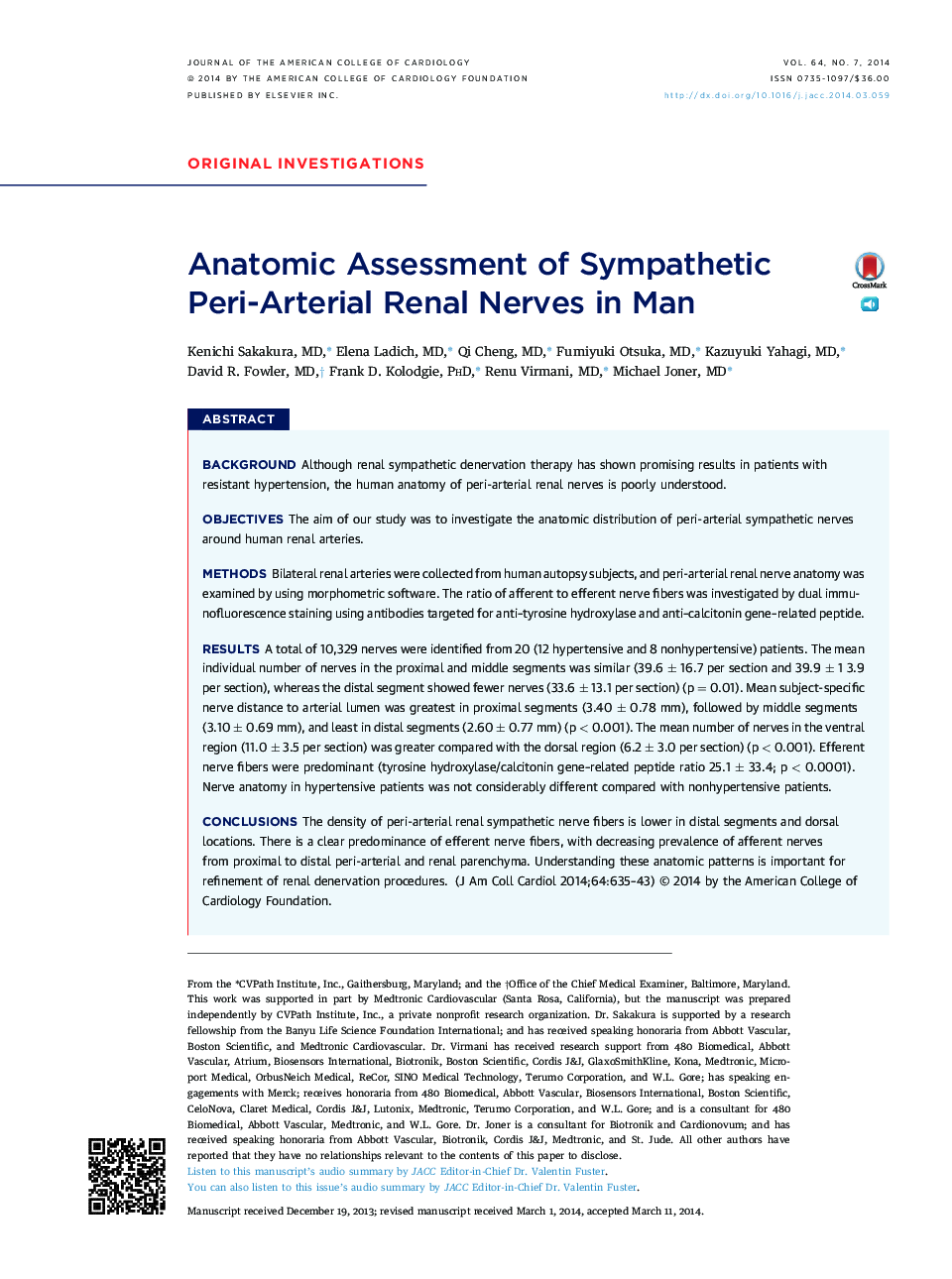| Article ID | Journal | Published Year | Pages | File Type |
|---|---|---|---|---|
| 5982855 | Journal of the American College of Cardiology | 2014 | 9 Pages |
BackgroundAlthough renal sympathetic denervation therapy has shown promising results in patients with resistant hypertension, the human anatomy of peri-arterial renal nerves is poorly understood.ObjectivesThe aim of our study was to investigate the anatomic distribution of peri-arterial sympathetic nerves around human renal arteries.MethodsBilateral renal arteries were collected from human autopsy subjects, and peri-arterial renal nerve anatomy was examined by using morphometric software. The ratio of afferent to efferent nerve fibers was investigated by dual immunofluorescence staining using antibodies targeted for anti-tyrosine hydroxylase and anti-calcitonin gene-related peptide.ResultsA total of 10,329 nerves were identified from 20 (12 hypertensive and 8 nonhypertensive) patients. The mean individual number of nerves in the proximal and middle segments was similar (39.6 ± 16.7 per section and 39.9 ± 1 3.9 per section), whereas the distal segment showed fewer nerves (33.6 ± 13.1 per section) (p = 0.01). Mean subject-specific nerve distance to arterial lumen was greatest in proximal segments (3.40 ± 0.78 mm), followed by middle segments (3.10 ± 0.69 mm), and least in distal segments (2.60 ± 0.77 mm) (p < 0.001). The mean number of nerves in the ventral region (11.0 ± 3.5 per section) was greater compared with the dorsal region (6.2 ± 3.0 per section) (p < 0.001). Efferent nerve fibers were predominant (tyrosine hydroxylase/calcitonin gene-related peptide ratio 25.1 ± 33.4; p < 0.0001). Nerve anatomy in hypertensive patients was not considerably different compared with nonhypertensive patients.ConclusionsThe density of peri-arterial renal sympathetic nerve fibers is lower in distal segments and dorsal locations. There is a clear predominance of efferent nerve fibers, with decreasing prevalence of afferent nerves from proximal to distal peri-arterial and renal parenchyma. Understanding these anatomic patterns is important for refinement of renal denervation procedures.
